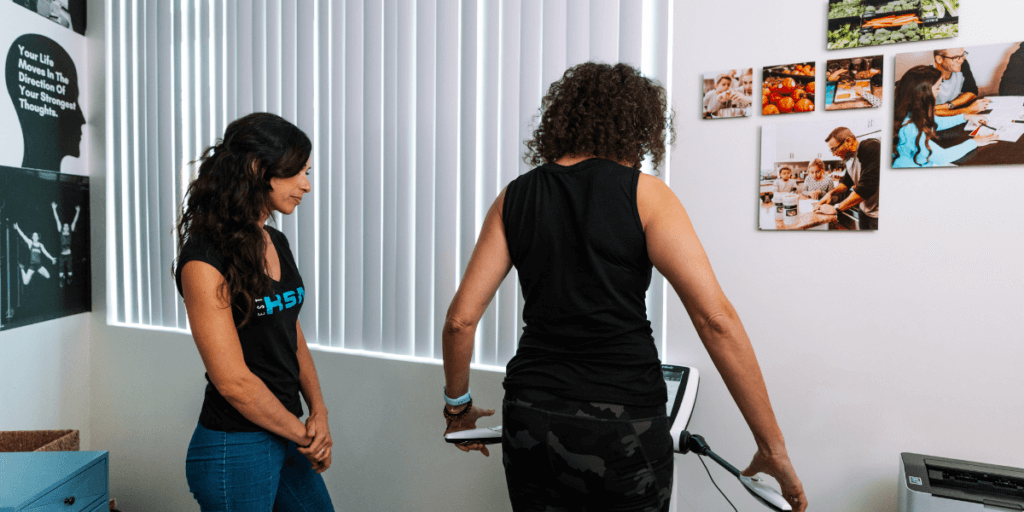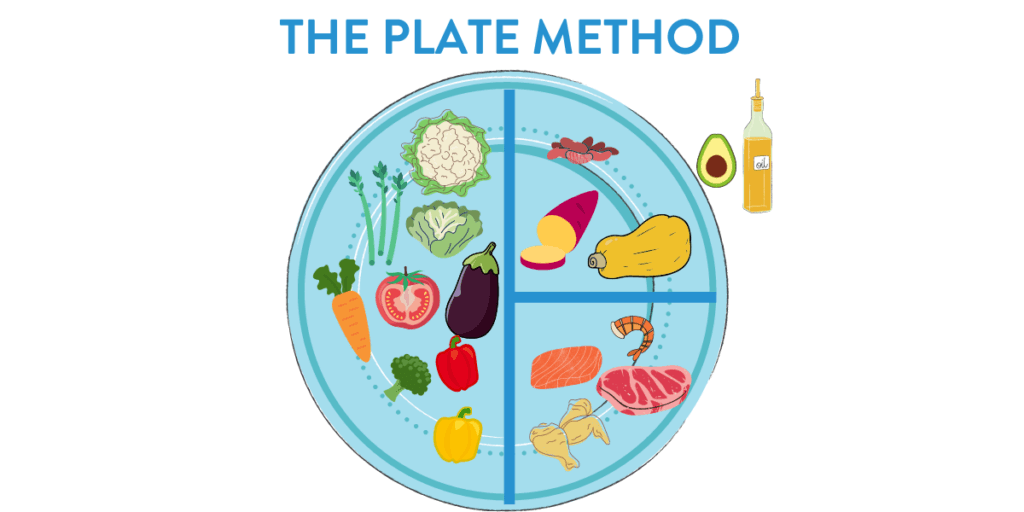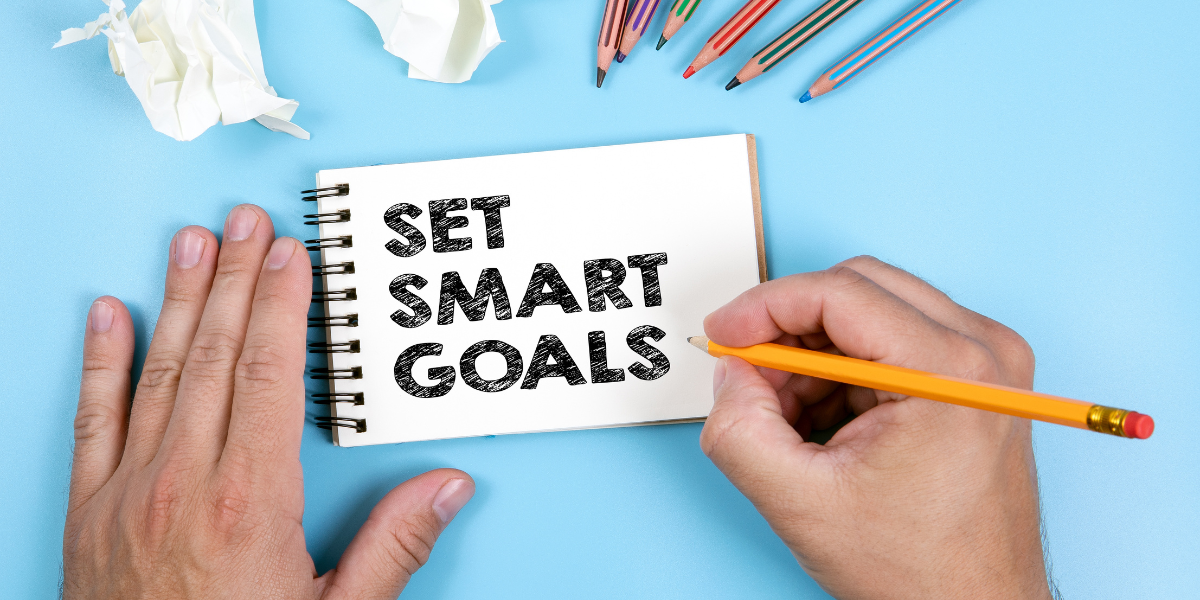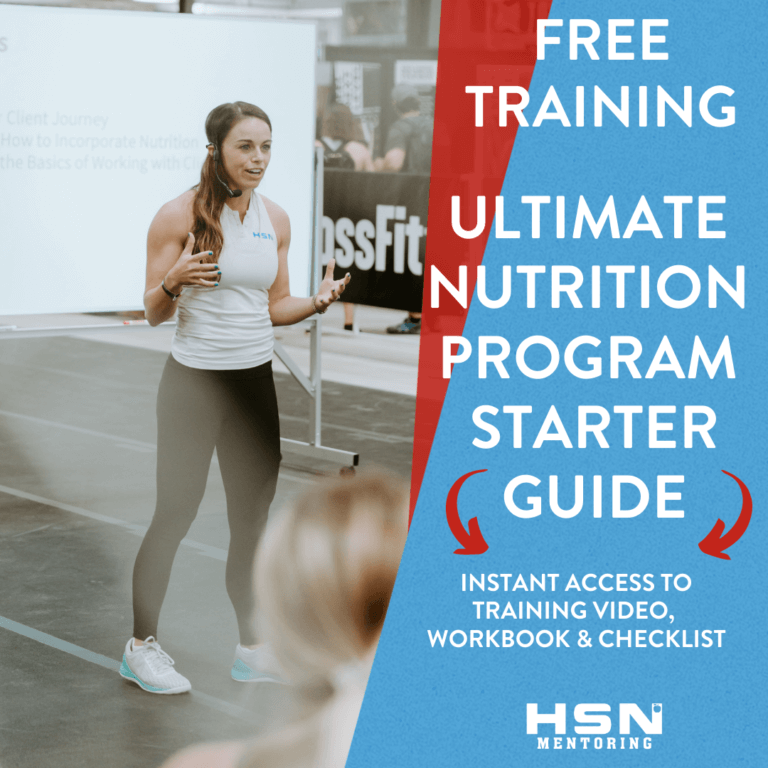What are gym member goal setting sessions (sometimes called member checkins), and how can they help your gym and nutrition business?
As gym owners and nutrition coaches we hear it all! “I want to lose 50lbs”, “If I could just get a strict pull up my life would be complete”. All these client goals are amazing, however there is rarely an actual plan set in place to reach them.
After time, clients realize that reaching these milestones are much harder than anticipated. Because they have no clear action plan, they fall off. Members become disenfranchised when they don’t see progress, and that’s when they are at risk for quitting the gym.
If you are a gym owner with a nutrition coaching program, this blog is for you! Read on to find out how gym member goal setting sessions can help you!

What Is A Gym Member Goal Setting Session?
Gym member goal setting sessions are when the owner of the gym, and/or their coaches set time aside to meet with each member individually. Member Check In’s is what we call these individual client meetings in my gym. During these 15-20 minute individual meetings we like to help our clients discover a way to become the vision they have of themselves.
The people who have joined a gym do so for a reason. Maybe it’s to lose weight, or focus on overall strength. It’s possible their doctor told them they need to “get fit”, and eat a healthy diet in order to improve their overall health, and live longer. Some may simply want to experience CrossFit for the first time. We find through the free intro process that many people who join a gym are simply unhappy with the way they look, and feel. They know the solution is fitness and nutrition, however they are not totally sure what to do in order to get where they want to be. This is where gym owners and nutrition coaches come in.
Whatever the reason or goals members have for joining the gym, as coaches, we need to know what those goals are. It’s the job of the coaching staff to help members get to where they want to be.

2 Big Reasons To Do Gym Member Goal Setting Sessions
When considering adding goal setting sessions or member checkins into the member journey, it is important to understand why doing so can be of benefit. After all, doing these sessions takes time, organization, and staffing resources.
BIG Reason #1 - Retention
It’s much cheaper to retain members than it is to acquire new ones. A great way to retain members is to build a relationship with them. In order to build a relationship with someone, communication needs to take place.
Group classes are great for many reasons such as camaraderie, and motivation. But group settings don’t allow for coaches to get to know clients on an individual basis, or allow for them to have a deep understanding of their goals. Like I said earlier on, a person joins a gym for a reason. If they have a goal they are targeting and cannot get there from attending their favorite class time, they will leave, and go somewhere else they think will help them find success.
Goal setting is a retention tool because it allows for one on one interaction between a coach and member that provides a space for the client to express their goals and aspirations regarding their fitness, health and wellness. When the coach opens up this line of communication, it lets the member know they are cared about.
So often members get lost in the sea of people coming in and out of class. They become just a number if they are not good at putting themselves out there to communicate. Coaches reaching out to schedule these individual check ins with clients really helps build the relationship, especially for the clients who struggle to communicate.

BIG Reason #2 - Revenue
Hosting these goal setting sessions end up being a great revenue source for the gym, and income source for coaches. During these check ins we talk about fitness goals, and nutrition. Each member gets the opportunity to jump on the Inbody so we can assess where their body composition is at.
Out of these conversations clients identify movements they want to work on in the gym, and health goals. The coach hosting the session provides clients with three options to stay on track and work towards the goals identified in the conversation.
One option is free, the second option has some accountability attached to it, and the third offers a high amount of accountability. Most of the time clients pick the free option first to work towards their specific goal. However, sometimes they choose an option with accountability, and about 50% of the people who attend a goal setting session purchase some sort of service a few weeks after the session takes place.
Nutrition Goal Example
Lets say a client wants to work on weight loss. The coach running the session would teach the client how to use the plate method as a way to help them balance their meals. Additionally they would offer them the option to join the nutrition challenge that is coming up in a few weeks. From there the coach would educate them about the ongoing nutrition coaching program in the gym.
When the client went home that night, they had all the best intentions to practice the plate method. But, they were unable to stay consistent, and therefor saw no results. One week after the goal setting session they signed up for the nutrition challenge.

Fitness Goal Example
Let’s say a client identifies they want to work on pull ups during one of these sessions. The coach offers them three suggestions to work towards getting a pull up. The first is negative pull ups from the rig 3 days per week before or after class. A higher accountability option the coach offered was the purchase of a 30 minute skill session. Finally the coach offered a 5 pack of skill sessions which of course would yield better results than just one skill session, and way better results than doing the free thing.

What Questions Are Asked In A Gym Member Goal Setting Session?
Some people will have specific CrossFit goals, a general fitness goal, or even a body weight goal. Others may say they want to build strength. Regardless, we ask open ended questions that will require an answer that is thought out. We want to get to the person’s real “why”.
Here are some examples of the questions we ask:
What are you most proud of accomplishing on your fitness and wellness journey thus far?
What is one thing that you want to accomplish that you have not yet been able to achieve?
Why is this important to you?
How would it feel to reach this goal?
How would reaching this goal impact your day to day routine?
When would you like to achieve this goal?
How can we best support you in reaching this goal?
On a scale of 1-10, how important is it to you to make this change?
How has fitness, nutrition and accountability helped support you on your journey thus far? (direct to google review and use as testimonial)
Name ONE thing you are willing to take action on today to get you one step closer to your goals
From here we make note of their long term, and short term goals. We do an InBody test and go over where their biometrics are. The coach will help define where healthy biometrics are, and emphasis that free option again when suggesting realistic ways to eat a healthy diet.
We Use The SMART Framework When Talking About Goals
The SMART framework is a popular and effective tool for setting and achieving goals. SMART is an acronym that stands for Specific, Measurable, Achievable, Relevant, and Time-bound. Each element of the SMART framework serves a distinct purpose and contributes to the overall effectiveness of goal setting.
Smart goals are important because the last thing we want is for a client to set an extreme goal that is not attainable, then become very discouraged when it’s impossible to get where they want to be.
Here’s why using the SMART framework to set goals is important:
Specific:
Setting specific goals helps clarify what exactly you want to achieve. When a goal is specific, it provides clear direction and eliminates ambiguity. It answers the questions of who, what, where, when, and why. Specific goals are easier to understand and focus on, making it more likely that you will take concrete actions to achieve them.
Measurable:
Measurable goals are those that can be quantified or tracked. Having a way to measure progress and success is crucial because it provides a sense of accomplishment and motivation as you see yourself moving closer to your goal. Measurable goals also help you stay on track and make adjustments if necessary.
Achievable:
Goals should be realistic and attainable based on your resources, skills, and circumstances. Setting achievable goals ensures that you don’t set yourself up for failure or disappointment. While it’s good to challenge yourself, setting goals that are too far-fetched can lead to frustration and demotivation.
Relevant:
Relevant goals are aligned with your broader objectives, values, and aspirations. It’s important to consider whether the goal is meaningful to you and whether it contributes to your overall growth or well-being. Having relevant goals keeps you motivated and focused on what truly matters to you.
Time-bound:
Time-bound goals have a specific deadline or timeframe for completion. This element adds a sense of urgency and accountability to your goals. Without a timeline, goals can easily be postponed or forgotten. Setting a deadline encourages you to take consistent action and prevents procrastination.

Wrap Up
We love gym member goal setting sessions!
Just like in training, consistency over time equals results. Your gym members will be delighted that the coaching staff cares enough to meet with them individually to discuss goals. Additionally these sessions spark trust, and strengthen the coach client relationship. Retention and revenue are extremely important to all businesses, but with a gym, coaches can feel good that the suggestions they are giving clients from these sessions are going to help them live a long, healthy life; and that is a great feeling!
Frequently Asked Questions
How do I pay my coaches for goal setting sessions?
I’ve seen this done several different ways, however in my gym we pay coaches $10 for each 15-20 minute session. If they end up selling nutrition or fitness, they receive a commission on the sale. If they PT and they are a personal trainer, they also get to keep that client. Same goes if they are a nutrition coach, and the client wants a nutrition services.
We highly suggest adequate training takes place with the gym owner before the coach is thrown into hosting these sessions.
How do I inform my clients they can register for these sessions?
We announce our goal setting sessions via email, and also place signs around the gym that include a QR code with a scheduling link. Additionally you can announce in the workout app, nutrition app, and whiteboard.
If you are a gym that has a lot of members, and you are worried about scheduling, one suggestion we have is to email members quarterly using the alphabet method. Names starting with A – F email the 1st quarter of the month to schedule their session, and people with names G-Z email the 2nd quarter. This will help spread out your sessions so the gym owner, and coaching staff are not compromised with too many people at one time.
Do I keep notes on our session?
At HSN Mentoring, we provide all of our clients with everything they need from an admin standpoint to run these goal setting sessions. We suggest that you create a Google Doc Template asking the questions you want to ask during your goal setting sessions. Copy the templated Google Doc and rename it the clients name. Store them in a folder labeled Goal Setting Sessions in the gym’s Google Drive.






